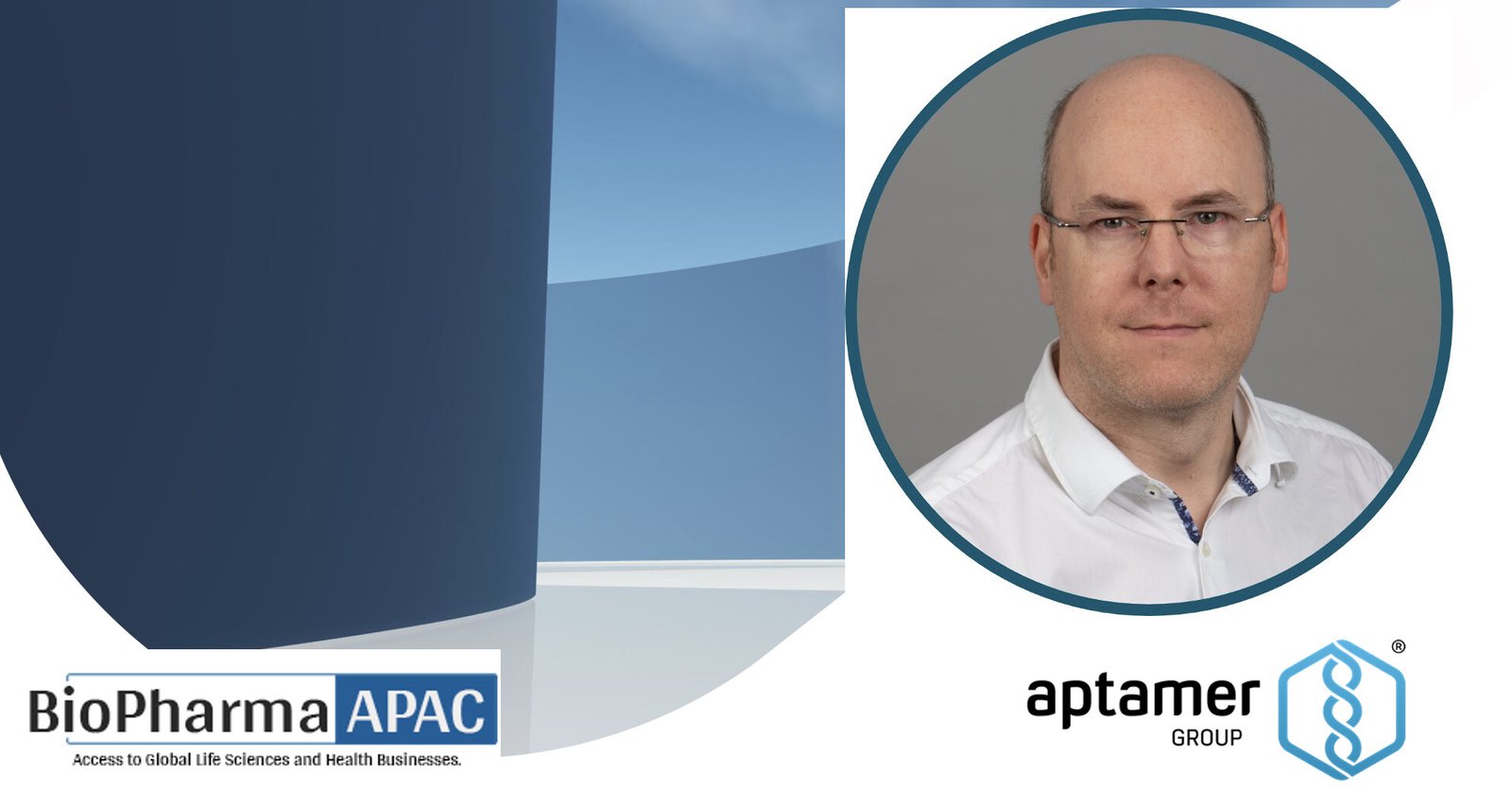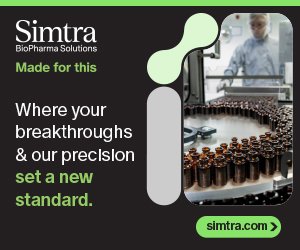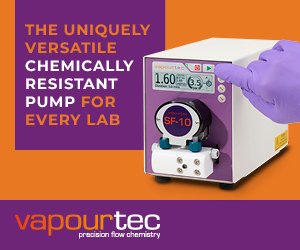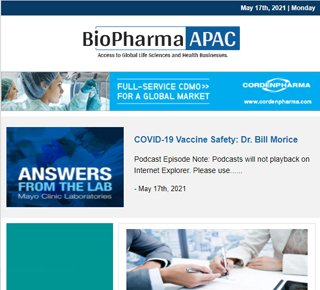Aptamer Group’s discovery platform is enabling new solutions across the life sciences.
04 January 2023 | Wednesday | News

Dr David Bunka, Chief Technical Officer at Aptamer Group
- How is success in the discovery of small molecule ligands increased with the Optimer platform?
The Optimer platform incorporates three selection methods for target types: 1) small molecules, 2) proteins, and 3) cell/tissue targets. The dedicated small molecule ligand discovery process is specifically developed for this target type and was established to improve the success of these targets over a one-size-fits-all ligand approach.
Small molecule ligands are a key target class for the development of diagnostics. Optimers are used as tool reagents to detect and quantify small molecules in a variety of assay types, such as ELISA, lateral flow tests, biosensors, and IHC. Additionally, small molecule binding ligands are being pursued in therapeutic applications such as inducible gene therapies, where binding to the small molecule results in the activation of a target gene.
Developing affinity ligands for small molecule targets remains a major challenge using antibodies. The size of antibody interaction surfaces and the relative rigidity of antibodies makes it difficult for them to bind accurately to small molecules. When generating antibodies, there are further problems in that small molecules are often non-immunogenic, meaning no immune response, and hence no antibodies are raised to the small molecule; or the small molecule is toxic. To overcome the lack of immunogenicity, antibody developers typically conjugate the small molecule to larger immune-stimulating carrier proteins. Pitfalls of this approach include the fact that a key chemical group is often used in conjugating the small molecule target to the carrier protein, limiting the available reactive sites available for antibody binding. Commonly, antibodies generated using this approach bind to the linker region rather than being specific for the small molecule and require extensive affinity maturation post-discovery.
The Optimer platform is wholly in vitro, generating binders without the need for animals, so the target immunogenicity is irrelevant. The automated in vitro process for generating small molecule ligands allows faster discovery against a wider range of targets. Beyond the ethical considerations, two key factors support the increased success of the Optimer platform in small molecule ligand discovery. Optimer ligand discovery for small molecules is performed with the target in solution (rather than conjugated to a carrier protein or other support as needed for other aptamer development processes). This feature of Optimer development allows interaction with all reactive chemical groups on the small molecule target for improved binding. Also, the flexible nature of the oligonucleotide Optimer ligands allows the Optimer ligands to wrap around small molecules rather than present a large paratope for interactions. These key factors in Optimer discovery increase the success in identifying Optimer ligands for small molecule targets that are useful in downstream applications compared to alternative technologies.
- How have Optimer ligands proven success with a diverse range of small molecule targets?
Using the Optimer platform we have successfully developed several Optimer ligands to a variety of small molecule targets, including chemotherapy drugs, antibiotics, metabolites, hormones, vitamins and toxins. These Optimer ligands are being investigated across different applications, including affinity chromatography, ELISA, and wearable and point-of-care biosensors in various matrices.
An Optimer ligand to moxifloxacin showed concentration-dependent binding to the antibiotic target in a range of matrices, such as plasma, river water, milk and urine, in an ELISA-like assay.
For the two chemotherapeutics, imatinib and irinotecan, we developed specific Optimer ligands that have been applied in point-of-care biosensor assays to facilitate therapeutic drug monitoring and improve patient dosing during cancer care. Both of the developed Optimer biosensor assays were validated to FDA regulatory requirements for bioanalytical assays. They showed excellent analysis of clinical samples, demonstrating the applicability of the small molecule ligands generated by the Optimer platform.
As multiple cross-reactive targets can be incorporated during the Optimer discovery process, the final Optimer ligands are highly selective. This selectivity enables partners to multiplex their small molecule assays for faster, parallel analysis of multiple targets.
- How do Optimer ligands cut 70% of the timelines compared to traditional antibody reagents?
In a research study comparing the Optimer platform with monoclonal antibody discovery and development timelines and costs, the Optimer platform was shown to reduce the time to clinic by as much as 70%. This is equivalent to 2.8 years saved when using Optimer ligands compared to antibodies.
This timesaving is due to two critical factors: Optimer ligand discovery and development involves fewer steps compared to antibodies and these steps are faster for Optimer ligands compared to antibodies.
Antibody humanization and affinity maturation are often required to create a viable antibody product. In Optimer development, there is no requirement for humanization as oligonucleotides are non-immunogenic, making them ideal as therapeutics and for use in diagnostics to prevent false positive or false negative results from human anti-animal antibody responses. The affinity of each Optimer ligand is tuned within the discovery process, where the ligands can be selected according to a desired binding profile, effectively negating this step in Optimer development. A stable cell line is also needed during antibody development to ensure a consistent supply of the selected antibody. As Optimer ligands are manufactured using well-controlled and scaled chemical synthesis, cell line generation is unnecessary. These chemical synthesis processes are scalable in a linear fashion from gram to multi-kilograms, and these processes can be easily transferred across multiple manufacturers to support simple Optimer supply. In addition, once the Optimer sequence is known, there is no risk of mutation or loss of expressing cell lines, giving greater security of supply.
All the steps in Optimer development are faster than the comparative steps in developing antibodies. Those that show the greatest time savings are during the initial ligand discovery process, where Optimer ligands can save as much as 75% of the time, and in GMP clinical supply, where as much as 28 weeks can be saved with the use of Optimer. Reducing
this time could offer significant advantages in speeding the development to the clinic and new
therapeutics and diagnostics that may be critical for patients.
- Explain more about Optimer applications for new diagnostics, affinity purification and targeted delivery of small molecule and gene therapy payloads
Optimer ligands offer a range of benefits from faster development to ethical compliance, long-term shelf life, and small size.
Optimer binders are developed and manufactured wholly in vitro, with no reliance on animal or cell-based systems. This offers a range of advantages, such as the ability to pursue non-immunogenic and toxic targets and new targets that have proven intractable with protein-based technologies like antibodies. Additionally, with Optimer discovery, there is potential to perform hypothesis-free discovery using cell-based targets without a priori knowledge of specific biomarkers. This discovery method can be performed, for example, against disease-associated vs. healthy cells with the isolated Optimers binding only to the disease cell types. This approach can help reveal new disease or tissue-specific biomarkers, with the identification of the biomarker performed after Optimer discovery and characterization. The ability to pursue new targets enables researchers to develop new diagnostics, therapeutics, and bioprocessing solutions using Optimer binders.
Directives have been introduced in the EU to support the use of non-animal-derived reagents in diagnostics and research. The FDA and EMA are also increasingly supporting the reduction of animal models in drug development. As animals are not used in the discovery or manufacture of Optimer binders, this offers a significant decrease in animal usage compared to standard antibodies, which are generated using animal models, helping to support increased ethical compliance.
Within the targeted delivery space, there is a huge need for delivery vehicles to support improved therapeutic effects. For new gene therapies, like siRNA and ASO, which have huge potential but significant challenges in penetrating the target cells for activity, targeting with Optimer can help target to the site-of-action and support receptor-mediated endocytosis for increased cellular uptake of these therapies. For small molecule drugs, like chemotherapies, targeting with Optimer could help reduce off-target effects such as non-specific cell uptake and toxicity of chemotherapeutics in non-cancerous tissues for reduced toxicity in patients. Alternative delivery vehicles are being explored, but unlike large molecular weight antibodies, Optimer ligands at up to a tenth of the size, can reach target sites that may not be accessible to larger antibody molecules and access new targets for new therapeutics. Optimer ligands are composed of oligonucleotides, DNA or RNA, meaning that when used as therapeutics, these molecules are typically associated with reduced immunogenicity compared to protein-based therapeutics.
Finally, Optimer binders are highly thermostable and are regularly shipped at room temperature. As they are defined based on their specific sequence, it is possible for multiple suppliers to readily manufacture a specific Optimer binder in a highly consistent manner and ship globally without the need for cold chain supply. These key features of Optimer are highly valuable to our partners, supporting simple global logistics, consistency from batch to batch and long-term security of supply.
- What is your approach to small molecule innovation and application?
As mentioned, our dedicated discovery process for small molecule Optimer ligands increases the potential for success in discovery compared to alternative one-size-fits-all discovery processes and those with large binding surfaces such as antibodies.
We support novel small molecule analytical and therapeutic applications in the small molecule space. Accurate and sensitive detection of small molecule targets can be challenging. Due to the small size of the target, available chemical groups for interaction can limit the development of matched ligand pairs. Steric hindrance in binding the small molecule, particularly with two large bulky antibody ligands, can limit the potential of matched pairs, which are required in many assay formats. Commonly used competition assays are based on one reagent to overcome these challenges but are associated with reduced sensitivity for this vital target class. At Aptamer Group, we have a proprietary assay format that allows sensitive detection and quantification of small molecules using a single Optimer binder. This has been applied by our partners in biosensor format for point-of-care biosensors in therapeutic drug monitoring and in multiplex assays but could also be used to other assay formats like lateral flow assays, helping to speed the development and reduce costs of these assays.
Beyond diagnostics and analytical applications, small molecule Optimer ligands are being explored as part of inducible gene switches for gene therapies. This approach allows precise control of gene expression after therapy is administered. Optimer binders to specific small molecules could act as a component of a genetic switch in a gene therapy to enable responsive gene expression that can be controlled by dosing the specific small molecule drug.
- How do you see the growth of the company and what plans do you have for the coming year.
Aptamer Group is rapidly growing to support the increasing demand for Optimer technology across the life sciences. The Company joined the AIM stock market at the end of 2021, so last year was our maiden year as a listed company. A key part of our strategy is to scale the team at Aptamer Group and our Optimer platform to meet the need for Optimer binders.
The Optimer platform is a high-throughput, automated discovery platform. The dependence on automation over manual handling for Optimer discovery reduces error in discovery and supports rapid discovery and development. Currently, 112 targets can be simultaneously processed through our discovery platform; this is being scaled to allow hundreds of targets to be processed in parallel. Increasing capacity in this way will enable us to support large-scale projects for hundreds of targets, such as required in many proteomics studies and also process multiple partner projects in parallel for faster Optimer discovery for our partners.
In November 2022, Aptamer Group moved to new premises, effectively tripling the footprint of the Company. The new space supports the expansion of the team and automated Optimer platform to enable more of our partners with Optimer-based solutions. During the past year the headcount has increased by 59% from June 2021 to 54 employees as at the end of September 2022, including an assay development team to demonstrate Optimer functionality as an additional service offering.
This year we are focusing on the development of key data packs to demonstrate the power of the Optimer platform in selected key applications where we believe it can contribute the most to the life science industry. This includes the use of Optimer ligands in targeted drug delivery and will support the development of strategic collaborations in the drug delivery tool space for Aptamer Group.
A further development in our Optimer technology is the internal development of our Optimer+ platform. This modified nucleotide platform combines the flexibility and manufacturing advantages of standard Optimer binders with protein-like properties. We are developing this at Aptamer Group and expect Optimer+ to broaden the range of targets addressable by Optimer ligands. Aptamer Group are committed to remaining at the forefront of oligonucleotide ligand technologies, incorporating new technologies and advancing our Optimer platform wherever possible to enable our partners with the best Optimer solutions helping to drive
Most Read
- Top 25 Biotech & Biopharma Leaders in Sustainable Innovation, 2025
- China’s Biopharma Dealmaking Surges in H1 2025, Driven by Record Licensing and Oncology Focus
- Chikungunya in China: How a “Forgotten” Arbovirus Found the Perfect Storm
- How Innovation Gaps in Biopharma Raise New Safety Concerns
- Smart Implants and the Future of Musculoskeletal Injury Treatment
- How Ethical Gaps in Psychiatry Could Undermine Biopharma Progress
- The Evolving Landscape of Women’s Health Innovation in the Asia-Pacific
- Using NLP-Driven Decision Support in Emergency Health Assistance
- Taiwan Steps Into the Global Spotlight With a New Cancer Therapy
- The Role of Unique Device Identification (UDI) in Tracing Medical Device Safety
- The Importance of a Patient’s Mental Health During Clinical Trials
Bio Jobs
- The State of Biotech and Life Science Jobs in Asia Pacific – 2025
- Avantor’s New CEO Ligner Aims to Unlock Global Potential and Deliver Shareholder Value
- AstraZeneca Commits $50 Billion to U.S. Expansion by 2030 in Biggest-Ever Global Investment
- Thermo Fisher, SAMRC, and South Africa’s Department of Science and Innovation Launch CATIR to Nurture Next-Gen Scientists
- Cube Biotech Appoints Former Sartorius CEO Dr. Joachim Kreuzburg to Board of Directors
- FDA’s AI Transition Marks a Turning Point in Drug Review: Industry Faces Pressure to Adapt Amid 20% Workforce Cut
- WuXi XDC Completes Mechanical Build of Singapore Bioconjugate Manufacturing Hub
News
Editor Picks











